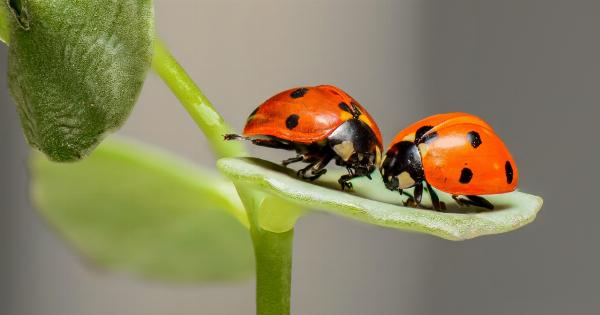Flies are a common type of insect found all over the world, including the United States. They are known for their ability to reproduce quickly and their annoying buzzing sounds, but they also play an important role in the ecosystem.
Flies are a vital source of food for many animals and help to break down organic matter, making them an essential part of the food chain. However, flies can also carry diseases and have a significant impact on human health. In this article, we will explore the world of flies and their impact on vision.
Types of Flies
There are more than 120,000 different species of flies in the world, with more than 18,000 species found in the United States. Some of the most common types of flies include:.
- Houseflies
- Fruit flies
- Blowflies
- Gnats
- Mosquitoes
- Horseflies
The Anatomy of a Fly
Before we dive into the impact flies have on vision, it’s essential to understand the anatomy of a fly. Flies have a three-segmented body, with a head, thorax, and abdomen. They have two large compound eyes and two antennae.
The compound eyes of a fly are among the most complex in the animal kingdom. They are made up of thousands of individual lenses, called ommatidia, which work together to create an image.
This allows a fly to see in many directions at the same time, giving them a wide field of vision.
Flies also have simple eyes, known as ocelli, which help them detect light and dark. The ocelli are located on the top of the fly’s head and are arranged in a triangle.
Flies and Vision
Flies have evolved in an environment where they need to be able to detect movement quickly. This is essential for their survival, as they need to fly away quickly from predators.
Flies can see movement up to four times faster than humans, making it difficult to swat them away. They can also detect polarized light, which helps them navigate and find food.
The compound eyes of a fly allow them to see in many directions at the same time. This gives them an almost 360-degree field of vision, which helps them detect predators and potential mates.
The individual lenses in the compound eyes allow a fly to see motion much like a video camera. However, the resolution of a fly’s vision is relatively poor compared to humans.
Flies are also incredibly sensitive to light. They can see light in a broader range of wavelengths than humans, allowing them to navigate even in low light conditions. This is why flies are often seen hovering around light sources at night.
The Impact of Flies on Vision
While flies play an important role in the ecosystem, they can have a significant impact on human health. Flies can carry a variety of diseases, including typhoid fever, cholera, and dysentery.
When flies land on food, they can transfer bacteria and other pathogens, which can cause illness.
Flies can also be annoying and distracting, making it difficult to focus on tasks. The buzzing sound they make can be distracting and irritating, causing stress and frustration.
When flies are present in large numbers, they can be a significant nuisance, making it challenging to enjoy outdoor activities.
Preventing Flies
There are several things that you can do to prevent flies from becoming a problem. Here are some tips:.
- Keep your home clean and free of food debris and spills
- Dispose of garbage regularly in sealed containers
- Keep your drains clean and free of clogs
- Store food in tightly sealed containers
- Screen all doors and windows to prevent flies from entering your home
By taking these steps, you can reduce the number of flies in your home and prevent them from becoming a problem.
Conclusion
Flies are an essential part of the ecosystem, but they can also have a significant impact on human health and well-being. Flies have complex vision, allowing them to detect motion quickly and see in low light conditions.
However, they can also carry diseases and be a significant nuisance. By taking steps to prevent flies, you can reduce their impact on your life and enjoy a healthier, more comfortable environment.






























